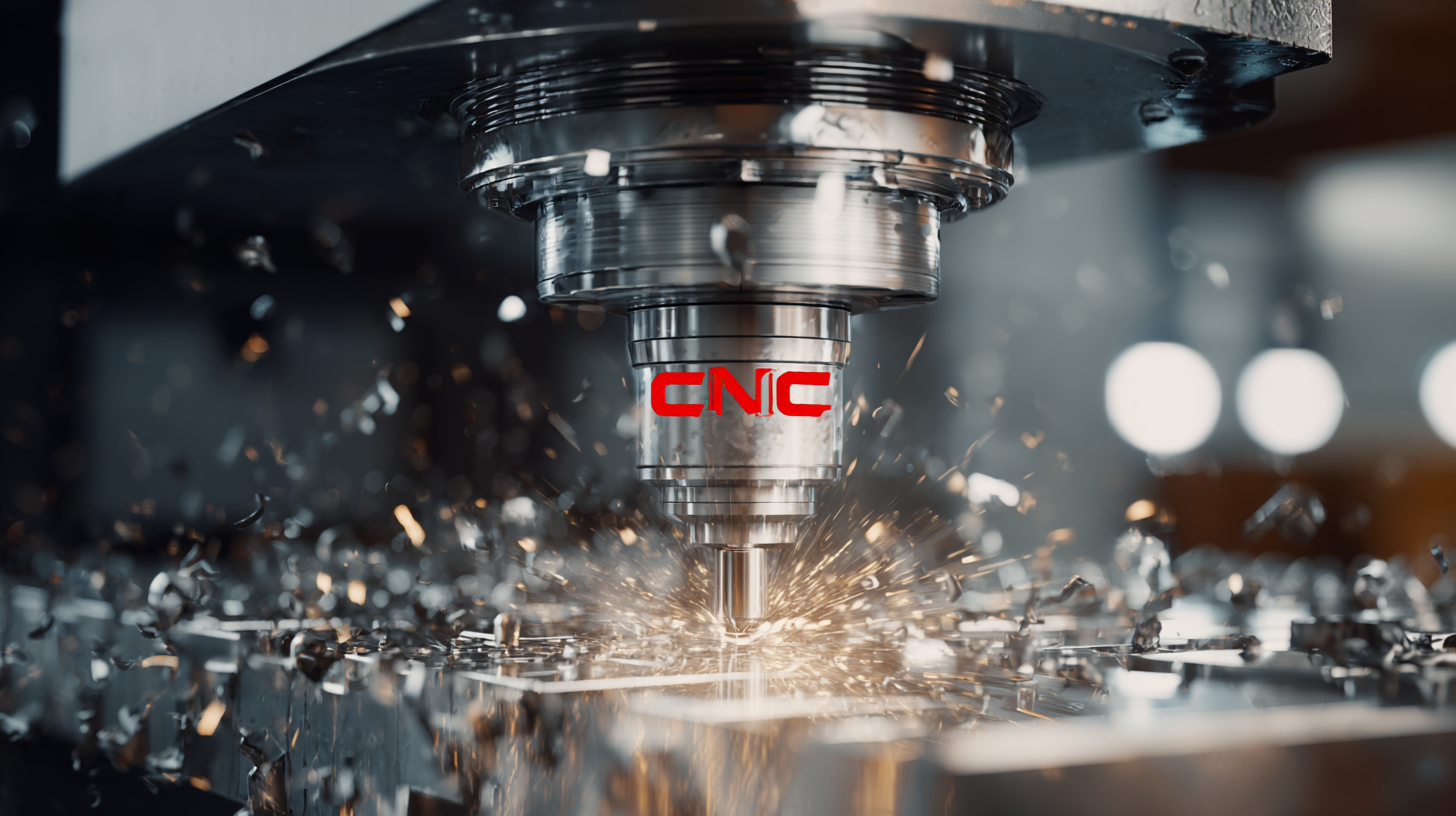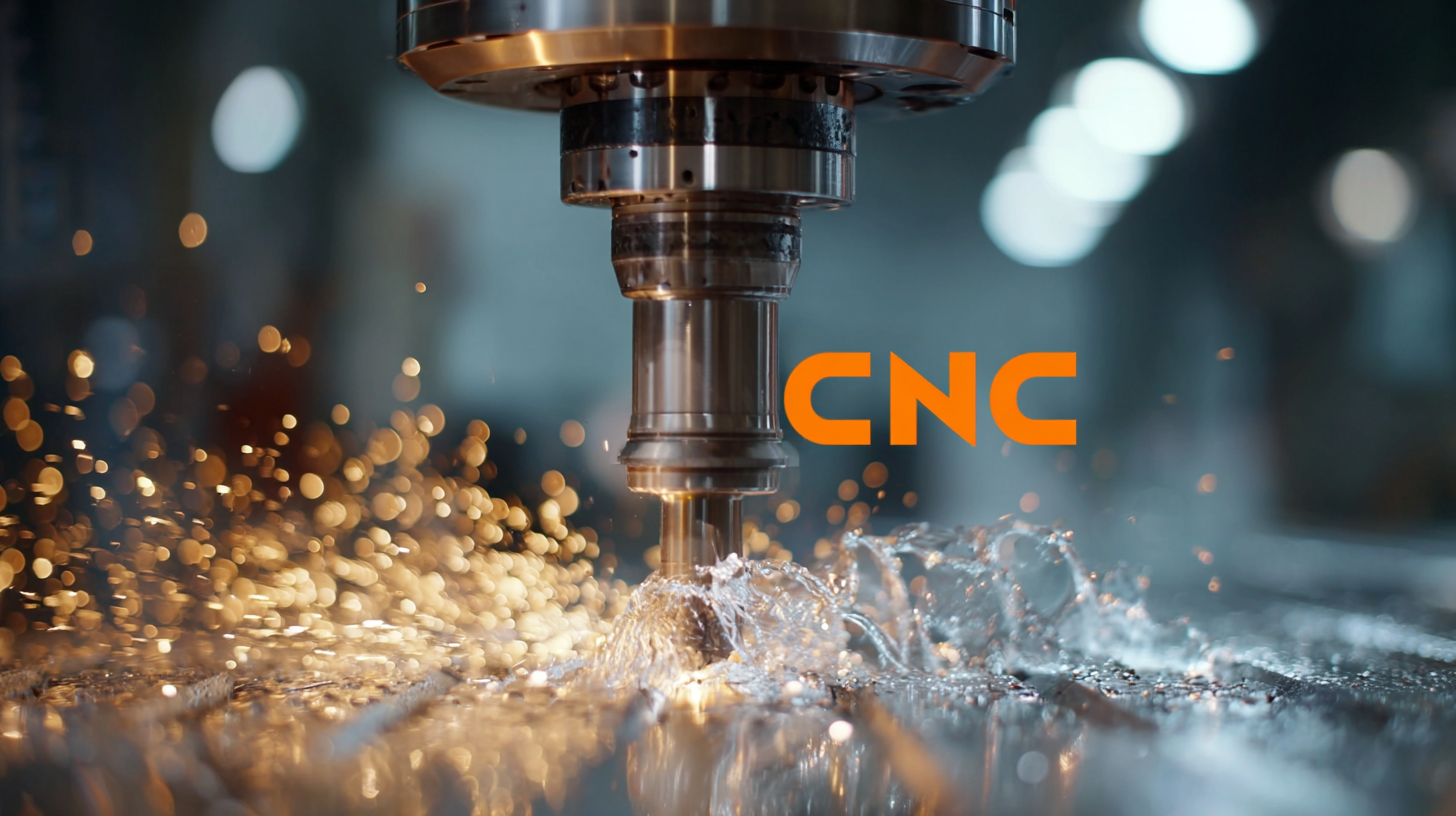
In an era where precision and efficiency drive manufacturing processes, the CNC cutting industry is poised for remarkable advancements by 2025. As we delve into the latest market trends and innovations surrounding CNC cutting technologies, it becomes evident that a fusion of digital solutions and top-tier machinery is reshaping the landscape. The integration of smart technologies not only enhances operational capabilities but also facilitates greater customization and faster production times.
 This blog aims to explore the emerging trends that are defining the future of CNC cutting, from automated systems to innovative materials that expand the boundaries of what's possible. Join us as we uncover how these developments are set to revolutionize the manufacturing sector, ensuring that businesses remain competitive in an increasingly demanding market.
This blog aims to explore the emerging trends that are defining the future of CNC cutting, from automated systems to innovative materials that expand the boundaries of what's possible. Join us as we uncover how these developments are set to revolutionize the manufacturing sector, ensuring that businesses remain competitive in an increasingly demanding market.
As we look towards 2025, the CNC cutting technologies landscape is poised for significant transformation driven by innovation and market growth. The global CNC machine market is projected to surge from $101.22 billion in 2025 to an impressive $195.59 billion by 2032, reflecting a compound annual growth rate (CAGR) of 9.9%. This growth is indicative of the increasing demand for efficient and precise manufacturing processes across various industries, underscoring the critical role of CNC technologies in modern production environments.
In the niche of CNC plasma cutting, the market is expected to expand significantly as well, with a valuation of $673.2 million in 2024 and a projected CAGR of over 5.1% from 2025 to 2034. The emergence of advanced plasma cutting technologies promises to enhance productivity and accuracy, catering to the evolving needs of industries that require high-quality material processing. Innovations such as automation, improved control systems, and enhanced cutting capabilities are set to revolutionize how manufacturers approach their cutting needs, reaffirming the importance of staying at the forefront of technology to remain competitive in a rapidly evolving market.
| Technology Type | Key Innovations | Market Impact | Projected Growth (%) |
|---|---|---|---|
| Laser Cutting | Fiber laser improvements, automation integration | Increased precision and efficiency | 15% |
| Plasma Cutting | High-definition plasma technology | Reduced material waste and operational costs | 10% |
| Waterjet Cutting | New abrasive materials, multi-axis capability | Versatility in cutting hard materials | 12% |
| Oxy-Fuel Cutting | Automated systems, improved safety features | Enhanced user safety and process reliability | 8% |
| CNC Routing | Advanced tooling and software capabilities | Higher precision in complex designs | 11% |
The CNC cutting market is poised for significant advancements by 2025, with several key players leading the charge in innovation and efficiency. Companies such as FANUC, Siemens, and Trumpf are at the forefront, offering state-of-the-art CNC technology that integrates artificial intelligence and automation. According to a 2023 market report by MarketsandMarkets, the CNC machine market is projected to reach USD 100 billion by 2025, driven largely by the increasing demand for precision and customization in manufacturing processes.
In addition to traditional leaders, emerging firms like Hypertherm and Bystronic are gaining traction by providing alternative cutting technologies that cater to niche markets. For instance, their laser and plasma cutting systems are favored in applications requiring high-speed processing and intricate designs. Furthermore, the introduction of hybrid CNC systems that combine various cutting methods is expected to reshape the competitive landscape, offering manufacturers superior versatility. As reported by Technavio, the growing trend toward automation and Industry 4.0 will further enhance the capabilities of CNC cutting technologies, ensuring that these key players remain integral to the industry's future.
This chart represents the projected growth rates of various CNC cutting technologies for the year 2025. The data illustrates the estimated market share of laser cutting, plasma cutting, waterjet cutting, and other innovative cutting methods.
As industries evolve, sustainability has emerged as a crucial consideration in CNC cutting technologies. The shift towards eco-friendly practices is not just a trend; it's a necessity for meeting regulatory standards and consumer demand for greener solutions. By 2025, we can expect to see significant advancements in CNC cutting that prioritize environmentally friendly processes, such as the utilization of energy-efficient machines and biodegradable cutting fluids that minimize harmful emissions.
Innovative materials and technologies are also playing a pivotal role in enhancing sustainability within the CNC cutting landscape. Lightweight and recyclable materials are being increasingly adopted, reducing waste and energy consumption throughout the manufacturing process. Additionally, advanced software solutions will enable precise cutting techniques that optimize material usage, thus maximizing resource efficiency. With a growing emphasis on life cycle assessments, businesses will increasingly adopt CNC technologies that not only streamline production but also contribute to a more sustainable manufacturing ecosystem.

The landscape of CNC cutting technologies is evolving rapidly, presenting a fascinating comparative analysis between
traditional and alternative methods.
Traditional CNC cutting methods, such as plasma and laser cutting, have been the industry standards for years,
celebrated for their precision and efficiency. They utilize high-energy tools to achieve intricate designs, making
them suitable for a diverse range of materials. However, these methods often involve significant energy
consumption and high operational costs, compelling manufacturers to seek innovative alternatives.
On the other hand, alternative CNC cutting methods, including waterjet cutting
and hybrid technologies, are gaining traction due to their unique advantages.
Waterjet cutting, for example, uses high-pressure water streams mixed with abrasives, allowing for intricate cuts
without thermal distortion. This method is particularly beneficial for delicate materials that cannot withstand heat.
Furthermore, advancements in CNC technology see the emergence of eco-friendly practices, integrating sustainable
materials and energy-efficient machinery. As industries continue to prioritize
sustainability, understanding the benefits and limitations of both traditional
and alternative CNC cutting methods will be essential for companies aiming to stay competitive in 2025
and beyond.
As we look toward the future of CNC cutting technologies, several key trends and innovations are poised to redefine the industry. One significant development is the integration of artificial intelligence and machine learning. These technologies will enhance precision, optimize cutting paths, and reduce lead times. Manufacturers adopting AI-driven CNC systems will likely experience a marked improvement in efficiency, allowing for more complex designs and customization.

Tip: To stay ahead in this competitive landscape, companies should invest in training their workforce in new AI tools and software, ensuring they can fully utilize the potential of these technologies.
Another noteworthy trend is the increased focus on sustainable practices. Upcoming CNC cutting technologies are expected to incorporate eco-friendly materials and waste-reduction techniques. This shift not only meets the growing demand for sustainable manufacturing but also appeals to environmentally conscious consumers.
Tip: Businesses should consider conducting an audit of their current practices and exploring partnerships with suppliers that prioritize sustainability, which can enhance their overall market appeal.

